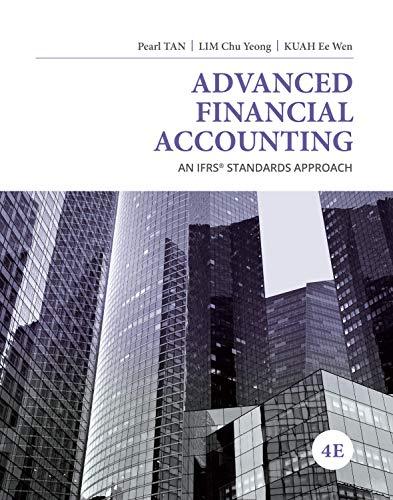Question
1. Manual or automated procedures that operate at a business process level and process transactions by individual applications are Known as 2. Once fraud is
1. Manual or automated procedures that operate at a business process level and process transactions by individual applications are Known as
2. Once fraud is detected, the auditor should first a. discuss it with shareholders. b. publicly discuss it at the annual general meeting. c. seek legal advice to determine reporting requirements. d. discuss it with the audit committee.
3. During the risk assessment phase, the auditor makes a judgement a. on the industry in which the client operates. b. on staff required to audit the client. c. on fraudulent activities at the client. d. on fraudulent activities and errors in the financial statements.
4. To validate information obtained from the client, the auditor must obtain a. collateral evidence. b. corroborative evidence. c. collaborative evidence. d. convincing evidence.
5. The responsibilities of overseeing the risk, internal controls, and management information systems are that of a. the auditor. b. the CEO. c. the board of directors. d. management.
6. IT should be considered by the auditor a. when executing the audit. b. at every stage of the audit. c. when developing the audit strategy. d. when gaining an understanding of a client's internal controls.
7. Fraud should always be reported to a. the audit committee. b. legal counsel. c. management. d. shareholders.
8. The most significant risks auditors face when management is rewarded based on financial performance is a. inadequate closing procedures, overstatement of income, and understatement of expenses. b. management override and inadequate closing procedures. c. poor internal controls and inadequate closing procedures. d. inadequate closing procedures and smoothing of income.
9.If there is an unresolved going concern issue, the auditor will a. evaluate the financial statements for material misstatement. b. evaluate the financial statements for fraud. c. evaluate the financial statements for errors. d. evaluate the disclosure in the financial statements.
10. The responsibility to prepare a list of related parties and transactions is that of the a. board of directors and client management. b. auditor and client management. c. auditor. d. client management.
11. A comparison of account balances over time is called a
a. simple comparison. b. horizontal analysis. c. vertical analysis. d. ratio analysis.
12. The risk of material misstatement is a. inherent risk * control risk. b. control risk * detection risk. c. audit risk * inherent risk. d. inherent risk * detection risk.
13. Which of the following would NOT typically be an appropriate base on which an auditor would determine materiality? a. total liabilities b. total assets c. gross profit d. net income before tax
14. An entity has a bank loan with a debt covenant stating that the current asset ratio must be more than 1.5:1. This circumstance will directly impact a. the basis for determining materiality. b. overall materiality. c. performance materiality. d. specific materiality.
15. Which of the following is true when the auditor determines the client has a low risk of material misstatement? a. increased reliance on testing of controls b. increased reliance on substantive tests of transactions and account balances c. detection risk is assessed as low d. inherent risk is assessed as high
16. Which of the following is NOT a reason that auditors conduct analytical procedures at the risk assessment phase of the audit? a. assist with the identification of risk b. highlight unusual fluctuations in accounts c. identify accounts at risk of material misstatement d. assess if the financial statements reflect the auditor's knowledge of their client
17. The risk that an auditor issues a clean opinion when the financial statements are materially misstated is called a. audit risk. b. control risk. c. inherent risk. d. detection risk.
18. Which of the following is a reason companies need cash in the long term? a. to pay suppliers b. to undertake capital investments c. to pay salaries d. to pay interest payments
19. What is the purpose of setting an overall audit strategy? a. determine the amount of materiality b. determine the effectiveness of the controls c. assist in inherent and control risk assessment d. set the scope, timing, and direction of the audit
20. In a common-size analysis, the auditor compares account balances with a single line item. In a balance sheet, this line item is generally a. total equity. b. current assets. c. total assets. d. total liabilities.
Step by Step Solution
There are 3 Steps involved in it
Step: 1

Get Instant Access to Expert-Tailored Solutions
See step-by-step solutions with expert insights and AI powered tools for academic success
Step: 2

Step: 3

Ace Your Homework with AI
Get the answers you need in no time with our AI-driven, step-by-step assistance
Get Started


